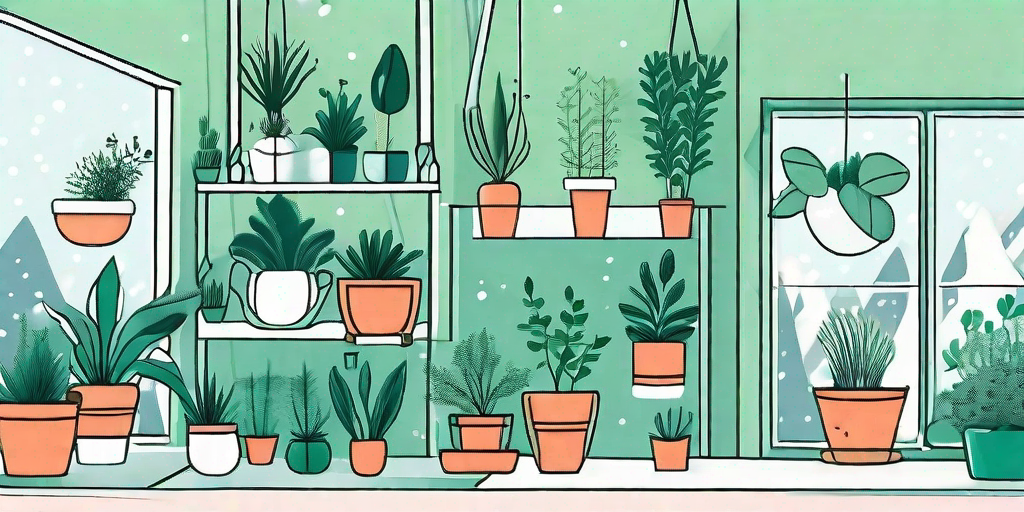
Winter can be a dreary season, with its short days, long nights, and a landscape that often resembles a grayscale photograph. But what if we told you that you could bring a splash of color and life into your home during these cold months? Yes, we're talking about indoor gardens! They're not just for the green-thumbed among us, but for anyone who wants a bit of summer in their living room when it's snowing outside.
Understanding Indoor Gardens
Before we dive into the nitty-gritty of indoor gardening, let's take a moment to understand what it entails. An indoor garden is essentially a collection of plants that are grown within your home. This could be a single potted plant on your windowsill, a collection of herbs in your kitchen, or even a full-blown jungle in your living room if you're feeling adventurous.
Indoor gardening is not just about aesthetics. It's a hobby that can help reduce stress, improve air quality, and even provide you with fresh produce. Plus, it's a great way to keep your green thumb active during the winter months.
Choosing the Right Plants
Not all plants are created equal, especially when it comes to indoor gardening. Some plants thrive in the indoor environment, while others... well, let's just say they'd rather be outside. So, how do you choose the right plants for your indoor garden?
Firstly, consider the light conditions in your home. Some plants, like succulents and cacti, need lots of sunlight, while others, like ferns and ivy, can do with less. Secondly, think about the temperature and humidity levels. Tropical plants, for instance, prefer warm and humid conditions, while others might prefer cooler temperatures.
Here's a quick list of some plants that are known to thrive indoors:
- Snake Plant
- Spider Plant
- Peace Lily
- English Ivy
- Pothos
Setting Up Your Indoor Garden
Now that you've chosen your plants, it's time to set up your indoor garden. This is where the fun begins! You can be as creative as you want, but here are a few tips to get you started.
Firstly, ensure that your plants have adequate light. This could mean placing them near a south-facing window, or investing in some grow lights. Secondly, make sure your plants have the right type of soil and are watered appropriately. Overwatering is a common cause of plant death in indoor gardens, so be careful!
Finally, consider the placement of your plants. Some plants do well in humid environments like the bathroom, while others prefer the dry conditions of a living room. And remember, plants are living things, so they'll need some care and attention. But don't worry, they'll repay you with their beauty and charm.
Common Challenges and How to Overcome Them
Indoor gardening is not without its challenges. But don't worry, we've got you covered. Here are some common issues you might face and how to overcome them.
Pest Infestation
Yes, even indoor plants can get pests. The most common are aphids, spider mites, and mealybugs. To prevent them, keep your plants clean and check them regularly for signs of infestation. If you do spot pests, you can use a mixture of water and mild soap to get rid of them.
Overwatering
As we mentioned earlier, overwatering is a common issue in indoor gardens. To avoid this, make sure your pots have drainage holes and don't water your plants unless the top inch of soil is dry. Remember, it's better to underwater than overwater!
FAQs
- Can I grow vegetables indoors?
- Yes, you can! Leafy greens like lettuce and spinach, herbs like basil and parsley, and even tomatoes and peppers can be grown indoors.
- Do indoor plants need special light?
- Not necessarily. Many indoor plants can thrive in natural light. However, if your home doesn't get a lot of sunlight, you might want to consider getting some grow lights.
- How often should I water my indoor plants?
- This depends on the type of plant, but a good rule of thumb is to water when the top inch of soil is dry.
Conclusion
Indoor gardening is a wonderful way to bring a bit of nature into your home, especially during the winter months. It can be as simple or as complex as you want it to be, and the rewards are well worth the effort. So why not give it a try? You might just find that you have a green thumb after all!
And remember, the best garden is the one that makes you happy. So go ahead, get your hands dirty, and start greening up your winter!















